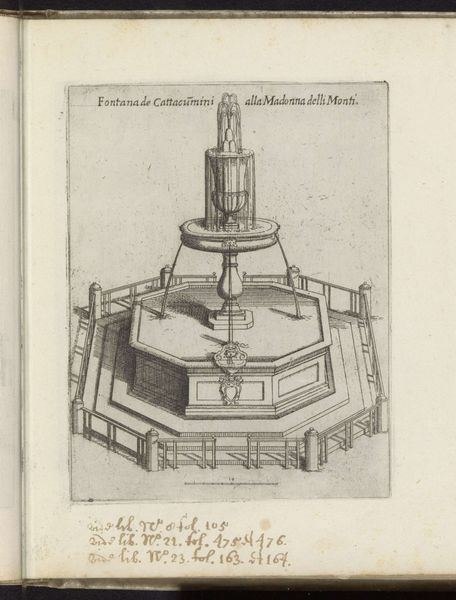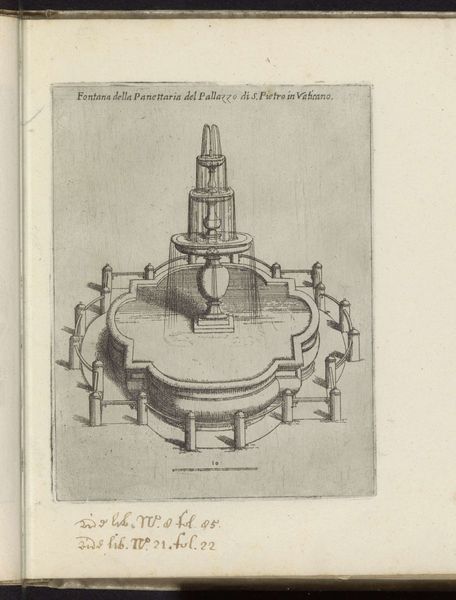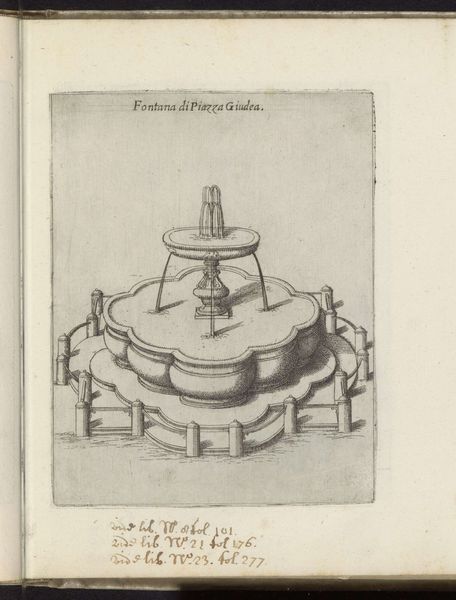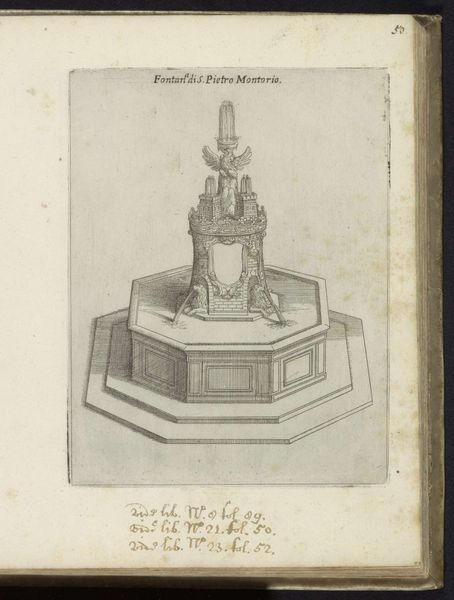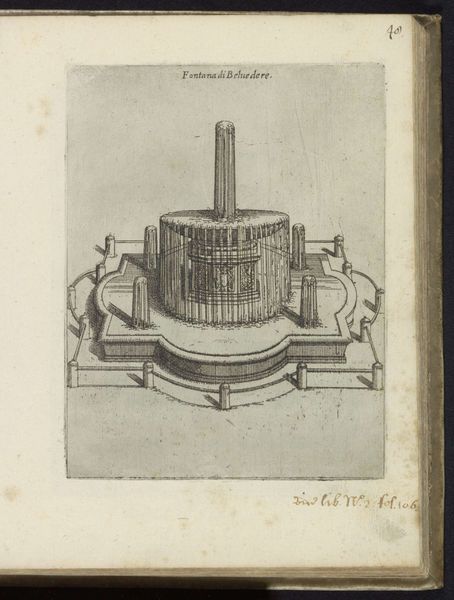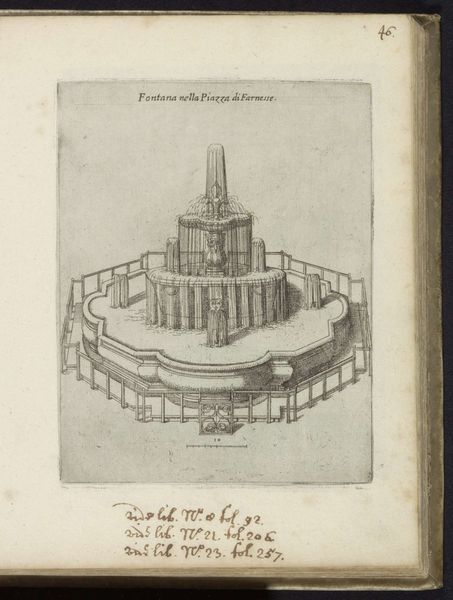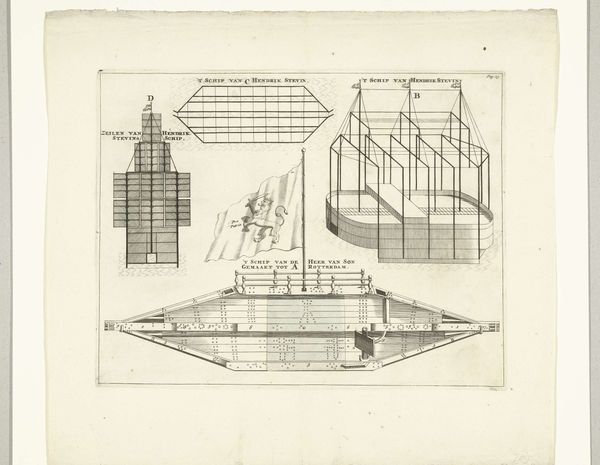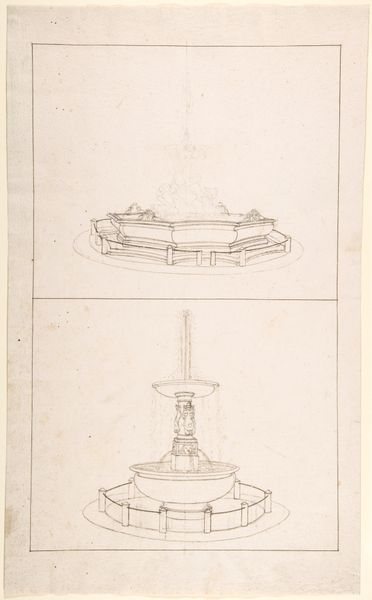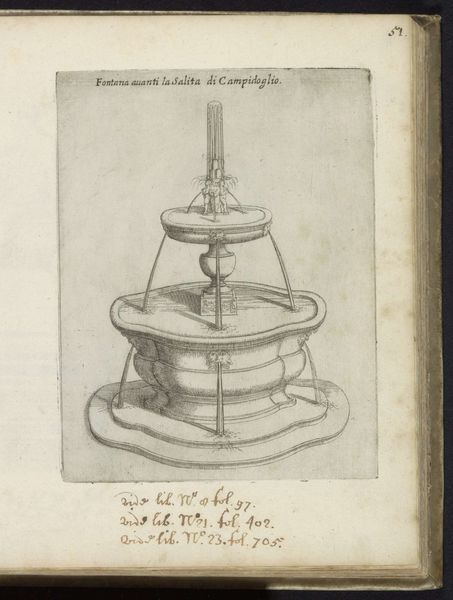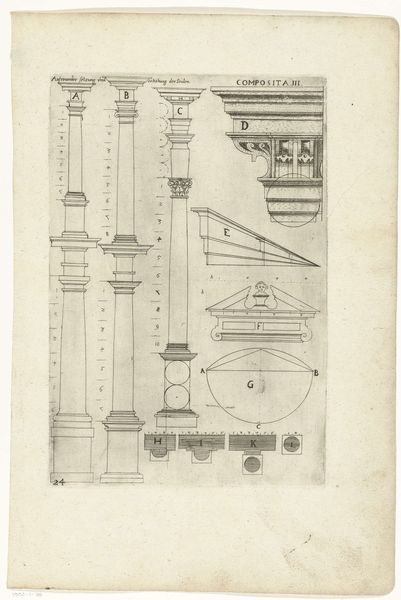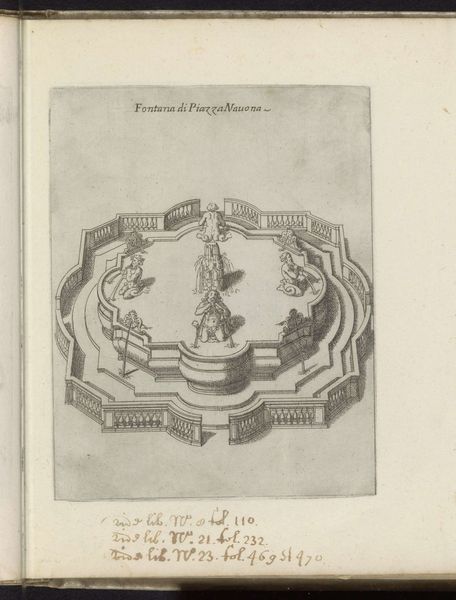
drawing, print, ink, engraving, architecture
#
drawing
#
aged paper
#
quirky sketch
#
baroque
# print
#
pen sketch
#
old engraving style
#
sketch book
#
personal sketchbook
#
ink
#
geometric
#
pen-ink sketch
#
pen work
#
sketchbook drawing
#
cityscape
#
sketchbook art
#
engraving
#
architecture
Dimensions: height 190 mm, width 148 mm
Copyright: Rijks Museum: Open Domain
Editor: So, here we have Domenico Parasacchi's "Fountain in Piazza del Popolo in Rome," created around 1637. It looks like an engraving, or perhaps a print from an ink drawing. I'm really struck by the precision of the lines, almost like an architectural blueprint. What stands out to you? Curator: This piece intrigues me as a material document. Consider the paper, the ink, and the very act of engraving. This wasn't just art; it was production. Who commissioned it, who printed it, and for what purpose? Was it a luxury item, celebrating Rome's urban development for an elite audience? Or did prints like this circulate more broadly? Editor: That's interesting, I was so focused on the aesthetic. How does knowing its possible production influence its importance? Curator: It repositions it. Suddenly, it’s less about the artist’s individual genius, and more about the system that enabled this image to be made and disseminated. The materials – the metal plate, the acid, the press – these are active agents, shaping not just the image but also its social life. It forces us to ask: who had access to these tools and skills? Editor: So, it becomes less about admiring the fountain itself and more about understanding the social fabric surrounding its depiction. Curator: Precisely. Consider the labour involved: the engraver’s skill, the printer’s expertise, the network of distribution. This print isn't just a representation; it's a product of a specific material culture, one rooted in labor and trade. It makes me wonder about the working class, and if images such as these played into the commodification of beauty at the time. Editor: Wow, I'll definitely look at prints differently from now on! It's like, instead of seeing just the image, I'm seeing the whole workshop and economic structure behind it. Curator: Exactly. It's about excavating the layers of production, revealing the material conditions that shaped its existence.
Comments
No comments
Be the first to comment and join the conversation on the ultimate creative platform.
